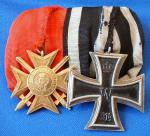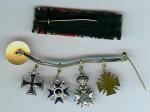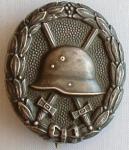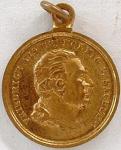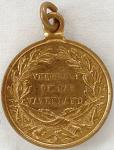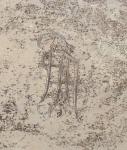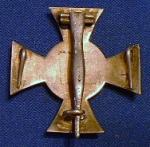
Beau Newman
Valued Member-
Posts
741 -
Joined
-
Last visited
-
Days Won
1
Content Type
Profiles
Forums
Blogs
Gallery
Events
Store
Everything posted by Beau Newman
-
Several years ago, I got this silver presentation tray of the type presented to officers upon their retirement or leaving a unit. It has imperial era hallmarks for .830 silver content. It has a script "AA8" in the center and the names of his fellow officers oround the outside. The names are: Ziervogel, von Fabeck, Henke, Troitzsch, von Luck, Friedrichs, von Schkopp, Weisbach, Koch, von Boehn, Graf von Pfiel, von Mitzlaff, Noeske, Dr. Richter, Frhr. v. Furstenberg, Neumann-Silkow, Frhr. v. Eckhardtstein, and Muller. I have attempted to match these names with a particular unit in a particular year but, have had no luck. It is possible that an older tray was used during the Weimar or even WWII era which may explain my difficulty in tying these names together, many of which wre distinguished throughout German history. For example, a von Pfeil was a founder of German Southwest Africa, a General Neumann-Silkow was a division commander in Rommel's Afrika Korps and another von Pfeil commanded a Gruppen in Luftwaffe JG52. Does anyone have an idea of what the "AA8" might designate or what era I should be looking for? Any comments or suggestions would be greatly appreciated.
-
My collecting started years ago as a young coin collector. It was drilled into me at an early age that cleaning or polishing is almost never done and I carried that rule over into medal collecting. I can find much pleasure in an old silver medal almost black with patina and would never think of "restoring" it by dipping or polishing it. However, there is the occasional exception. This came out of Portugal a couple of years ago as a cased Oldenburg PFL Knight 2nd Class w/Crown. When I received it, I noticed 2 things. First, it seemed lighter than the typical silver piece and, second, the black "patina" on the cross appeared more like grime, rather than patina as it didn't show any underlying luster. Against my nature, I broke my "no cleaning" rule with a mild solution and this is what popped out: I still have a strong anti-cleaning bias but, I no longer say never.
-
Silver-gilt MSHMs are silver medals that have been gilded later. All issue pieces were either gold or bronze gilt. They have a very strong "prooflike" appearance with a distinct cameo contrast between the devices and the fields. The S-C-G medal may just be a case of the jeweler replacing the suspension to make it easier to mount.

